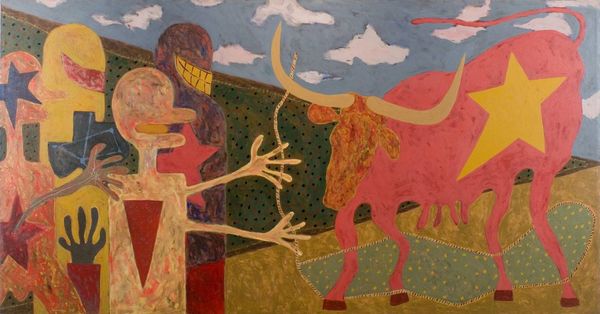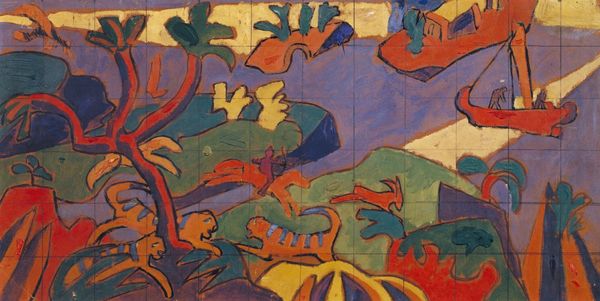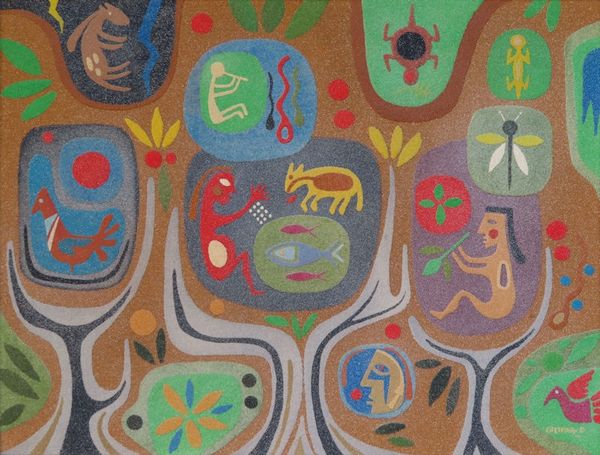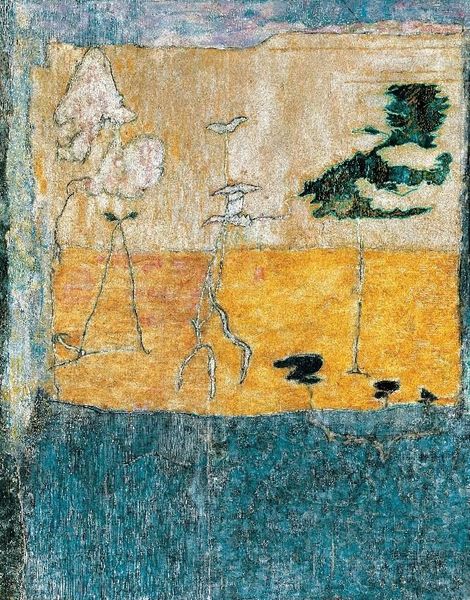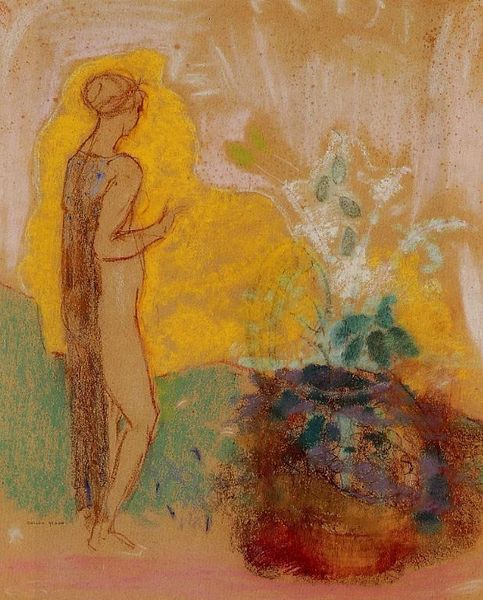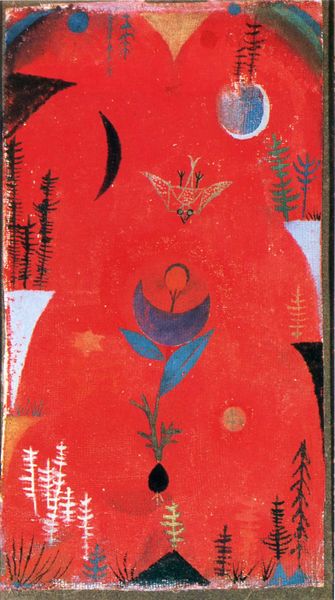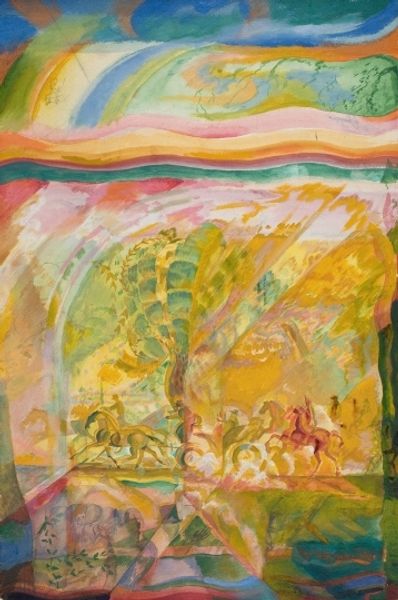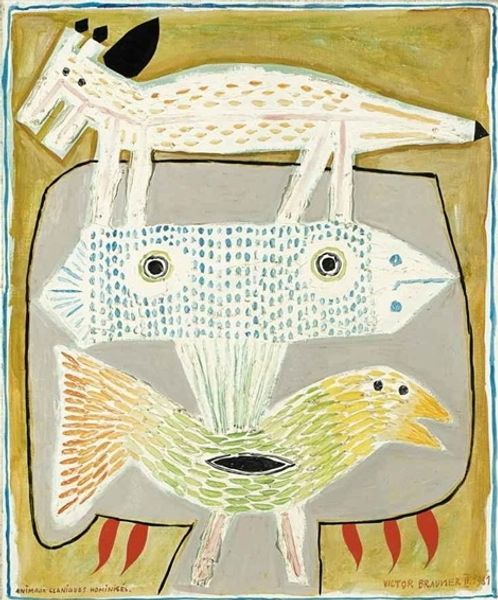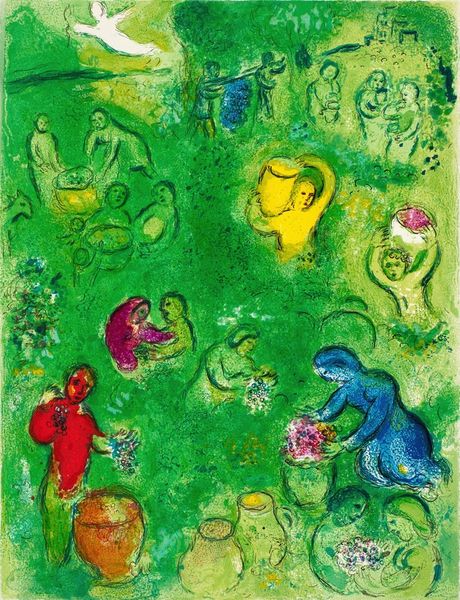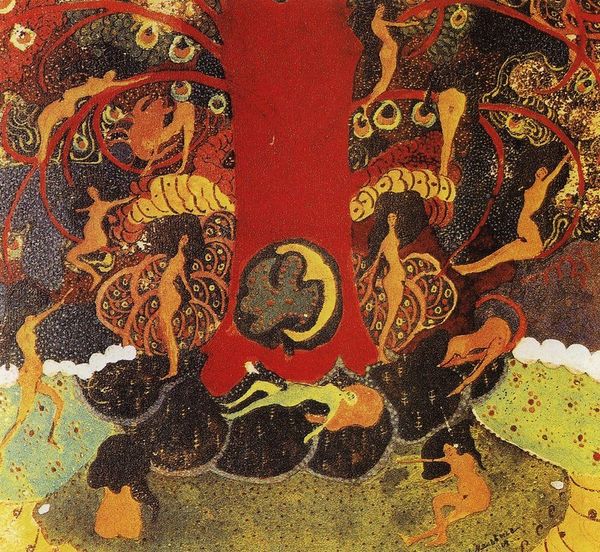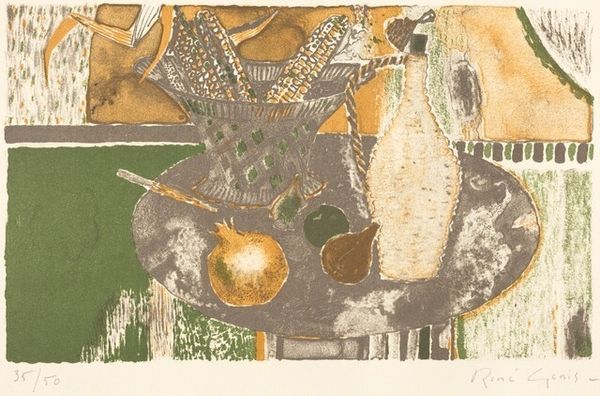
painting, oil-paint, fresco
#
narrative-art
#
painting
#
oil-paint
#
landscape
#
rayonism
#
figuration
#
fresco
#
modernism
Copyright: Public domain US
Editor: This is "Spring," painted in 1912 by Mikhail Larionov. It’s oil on canvas, and it definitely has a striking, almost otherworldly feel, with all of the golden colors. How do you interpret this work, beyond just a surface-level depiction of the season? Curator: Larionov’s “Spring” transcends a simple pastoral scene. Considering it was painted in 1912, we can examine its cultural context. Russia was on the cusp of significant social and political upheaval. Notice how the figures are rendered: they are somewhat androgynous, flattened, almost primal. What do you think that says about conventional notions of gender and identity in a rapidly changing society? Editor: I see what you mean. They don't conform to traditional representations of male or female figures. The flatness gives them a timeless, universal quality, maybe? Curator: Precisely! The deliberate lack of idealization in these figures invites a dialogue with contemporaneous avant-garde movements that questioned traditional academic artistic conventions as much as social norms. And what about the relationship of these figures to nature represented in the painting? How might it question anthropocentric worldviews? Editor: I didn't think of that! It makes me reconsider how often art reinforces the idea of humans as separate from, and superior to, nature. These figures are more like emanations of the landscape itself. Curator: Indeed! And if we look at the use of rayonism-- the radiating lines of color--can you infer how this technique subverts established ways of seeing? Editor: The lines give everything a sense of energy. It makes it more about experiencing the feeling of spring, rather than just seeing a literal depiction of it. This makes so much more sense to me now. Thanks for pointing out how much history is packed into these images! Curator: Of course. It really illuminates how art is constantly in conversation with cultural paradigms!
Comments
No comments
Be the first to comment and join the conversation on the ultimate creative platform.

